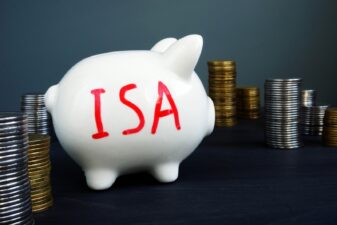Much of the talk currently surrounding Quindell (LSE: QPP) is focused on a potential bid for the group’s main operating division by Australian law firm Slater & Gordon.
Slater & Gordon said last week: “No offer has yet been put to Quindell and there is no certainty that an offer will be put …”, so I’ve gone back to Quindell’s cash flow statements to look at the company’s prospects if no deal is done with the Aussie firm. After all, most Quindell shareholders didn’t invest in the hope of a break-up of their fast-expanding company!
The table below shows a detailed breakdown of Quindell’s cash flows from operating activities since the start of 2013, and summary numbers for the other two sections of the cash flow statement — investing activities and financing activities.
Passive income stocks: our picks
Do you like the idea of dividend income?
The prospect of investing in a company just once, then sitting back and watching as it potentially pays a dividend out over and over?
If you’re excited by the thought of regular passive income payments, as well as the potential for significant growth on your initial investment…
Then we think you’ll want to see this report inside Motley Fool Share Advisor — ‘5 Essential Stocks For Passive Income Seekers’.
What’s more, today we’re giving away one of these stock picks, absolutely free!
| H1 2013 (£m) | H2 2013 (£m) | H1 2014 (£m) | Q3 2014 (£m) | Q4 2014 (£m) | H2 2014 (£m) | |
| Cash (outflow)/inflow from operations before exceptional costs | (7.3) | 17.8 | (51.2) | 9.4 | 3.6 | 13.0 |
| Cash outflow from exceptional costs | (4.9) | (2.3) | (2.1) | (0.2) | — | — |
| Cash (used in)/generated from operations before net finance expense and tax | (12.3) | 15.4 | (53.3) | 9.2 | — | — |
| Net finance expense | (0.7) | (1.0) | (0.7) | — | — | — |
| Tax | (5.7) | (4.7) | (23.4) | — | — | — |
| Net cash (used in)/generated from operating activities | (18.7) | 9.7 | (77.4) | — | — | — |
| Net cash used in investing activities | (15.7) | (43.1) | (42.9) | — | — | — |
| Net cash generated from financing activities | 9.6 | 206.0 | 4.7 | — | — | — |
In November 2013, Quindell raised cash of £200m from investors via a placing (the bulk of the £206m recorded under net cash generated from financing activities in H2 2013). This enabled Quindell to continue purchasing subsidiaries, associated undertakings and intangible assets (the bulk of the £43m outflow recorded in both H2 2013 and H1 2014 under net cash used in investing activities).
More significantly, though, the cash from the placing allowed Quindell to massively increase the number of personal injury claims it took on (predominantly road accident claims for whiplash and suchlike). These claims have heavy upfront costs, reflected in cash flow from operations (the top line of the table) swinging to a £51m outflow in H1 2014 from an £18m inflow in H2 1013.
Nevertheless, Quindell was able to report a substantial paper profit in H1 2014 (pre-tax £154m) because, under accounting rules, it was able to book as profit the future cash it expected to come in when the personal injury claims settled (there’s an an average lag of six months, according to the company). Tax is paid on profit, of course, so we see a big leap in the tax Quindell paid in H1 2014 to £23m, contributing to an overall cash outflow from operating activities during the period of £77m.
Quindell reassured investors that cash flow (at the top line level of the table above) would turn positive in H2 2014. The company guided on an inflow of £30m-£40m, followed by up to £100m in H1 2015. Management said the guidance had no significant reliance on noise-induced hearing loss (NIHL) cases, which the company had recently begun to take on in bulk.
Quindell missed its £30-£40m guidance, posting a cash inflow from operations of just £13m (or 37% of the mid-point of management’s guidance range). And, worryingly, at a time when inflows were expected to be snowballing rapidly from month to month, the £13m consisted of £9.4m in Q3, falling to £3.6m in Q4.
Remember, too, that the £13m is just the top line inflow from operations. If exceptional costs, and finance and tax costs, were similar to H1 then the £13m inflow would become an outflow of £13m when we get down to serious business at the level of net cash used in/generated from operating activities.
There will also have been an outflow from investing activities, albeit not perhaps at the £43m per half-year seen previously, because Slater & Gordon paid Quindell a fee in December that should have been put through this section of the cash flow statement. Slater & Gordon advanced Quindell £12.1m for the right to take a portfolio of personal injury cases, subject to due diligence, and a right to exclusivity (which expires on 31 March) in respect of a possible offer for the operating division.
Despite the £12.1m shot in the arm, though, it’s likely a net cash outflow from investing activities in H2 2014 will have added to the net cash outflow from operating activities; and, with no major inflows from financing activities announced, it appears Quindell ended 2014 as a burner of cash, reliant on overdrafts from its banks.
Clearly, something had gone very wrong with Quindell’s cash flow projections. Which is why, in December, management had announced that “in conjunction and consultation with the Company’s bankers, advisers and auditors, PwC is being engaged to carry out an independent review. This will review, inter alia, the Group’s main accounting policies and expectations as to cash generation into 2015”.
PwC’s review has taken longer than anticipated. The last news we had was on 27 February, when Quindell told us it expects the review to be completed “in the next few weeks”.
Due to the big operating cash flow undershoot in H2 2014, it looks highly likely that PwC will find that Quindell’s accounting policies have been too aggressive. This could result in damaging profit re-statements and balance sheet write-downs. As such, I would suggest that if you’re thinking of investing in Quindell, it would be prudent to wait for the outcome of the PwC review.







